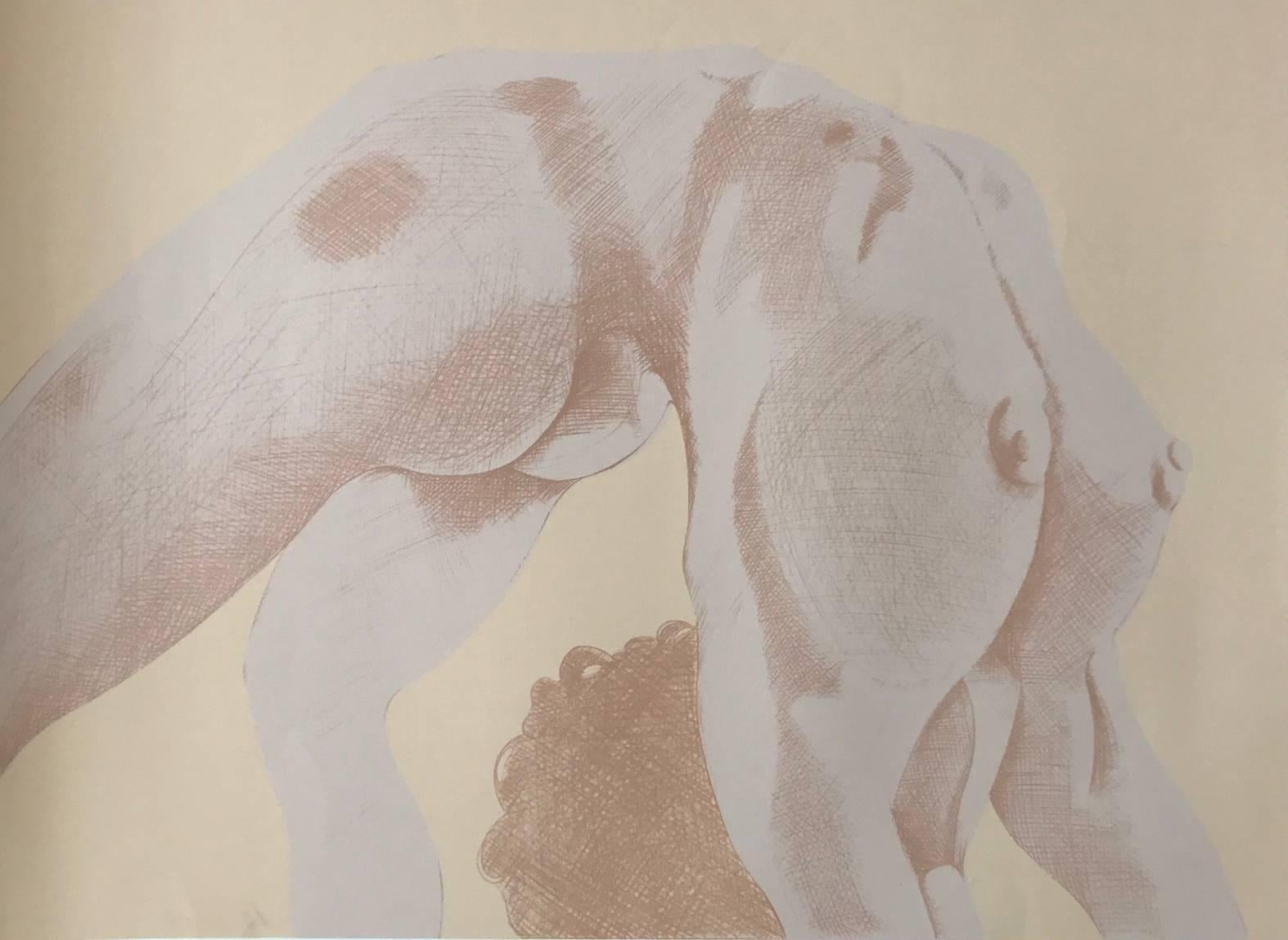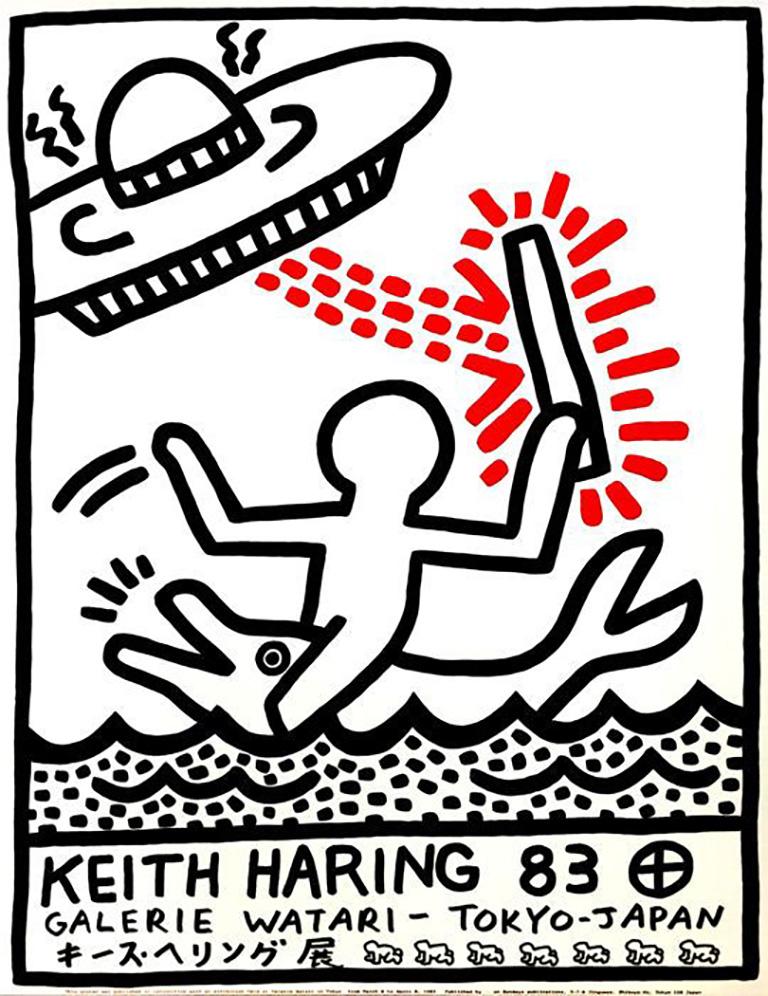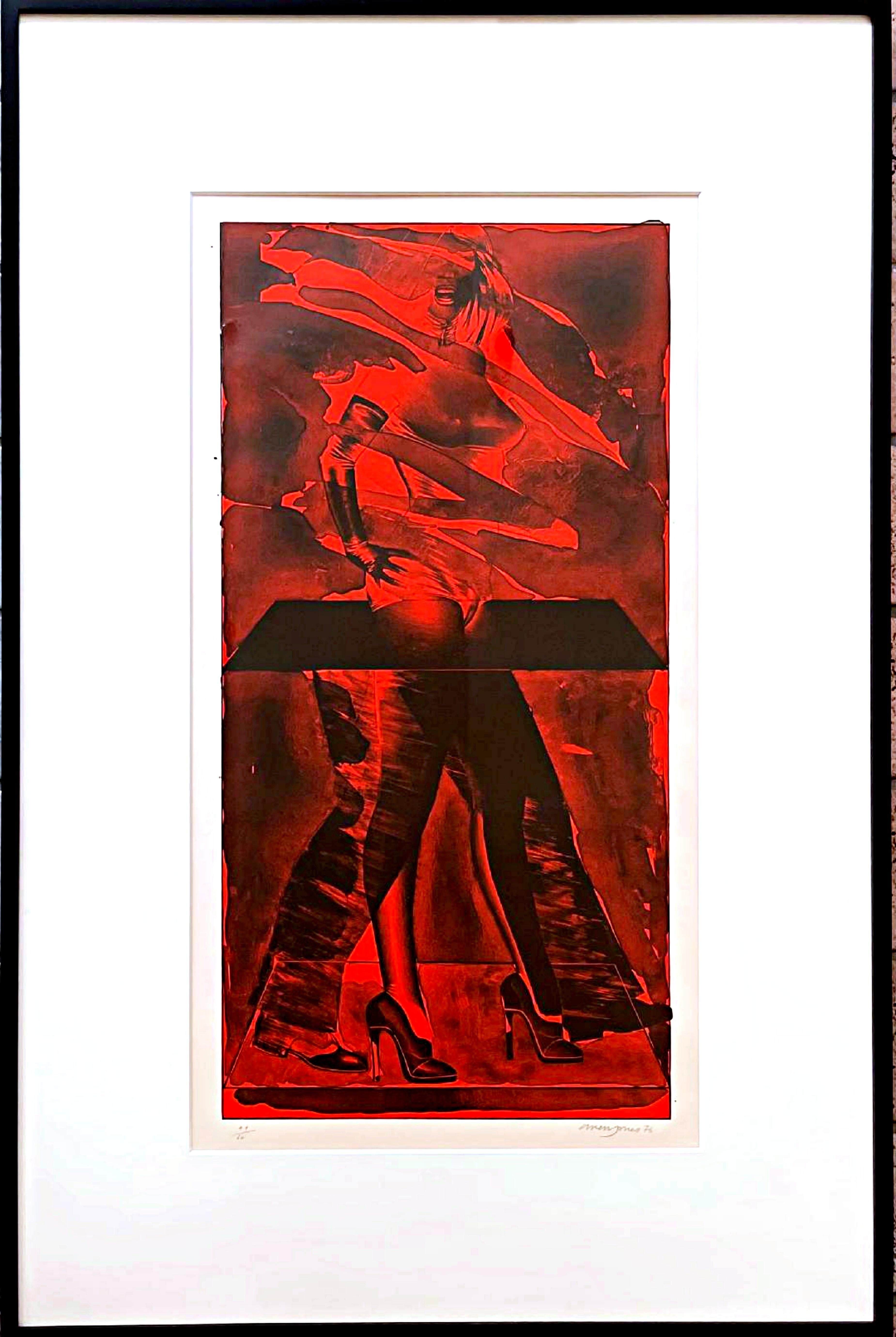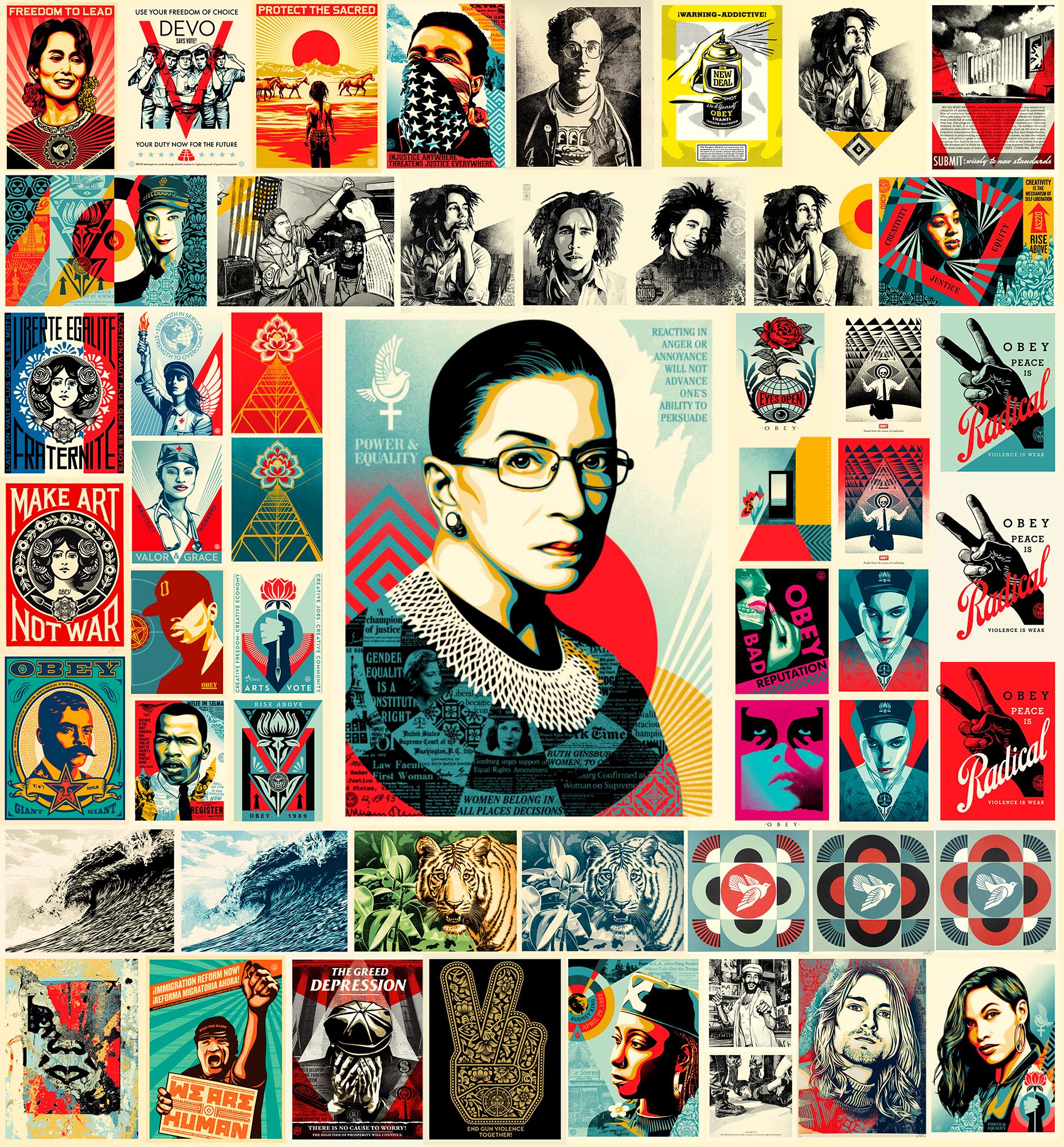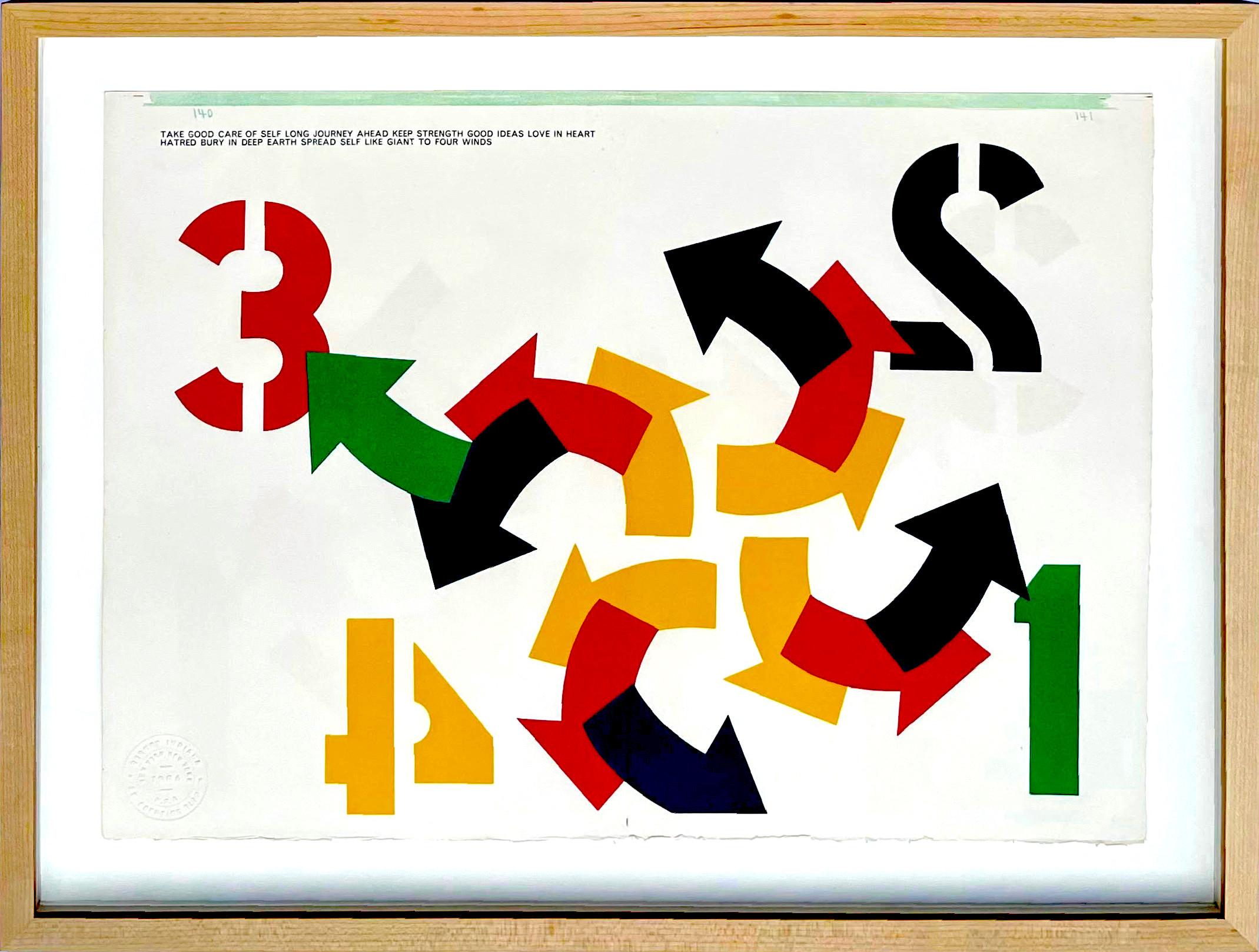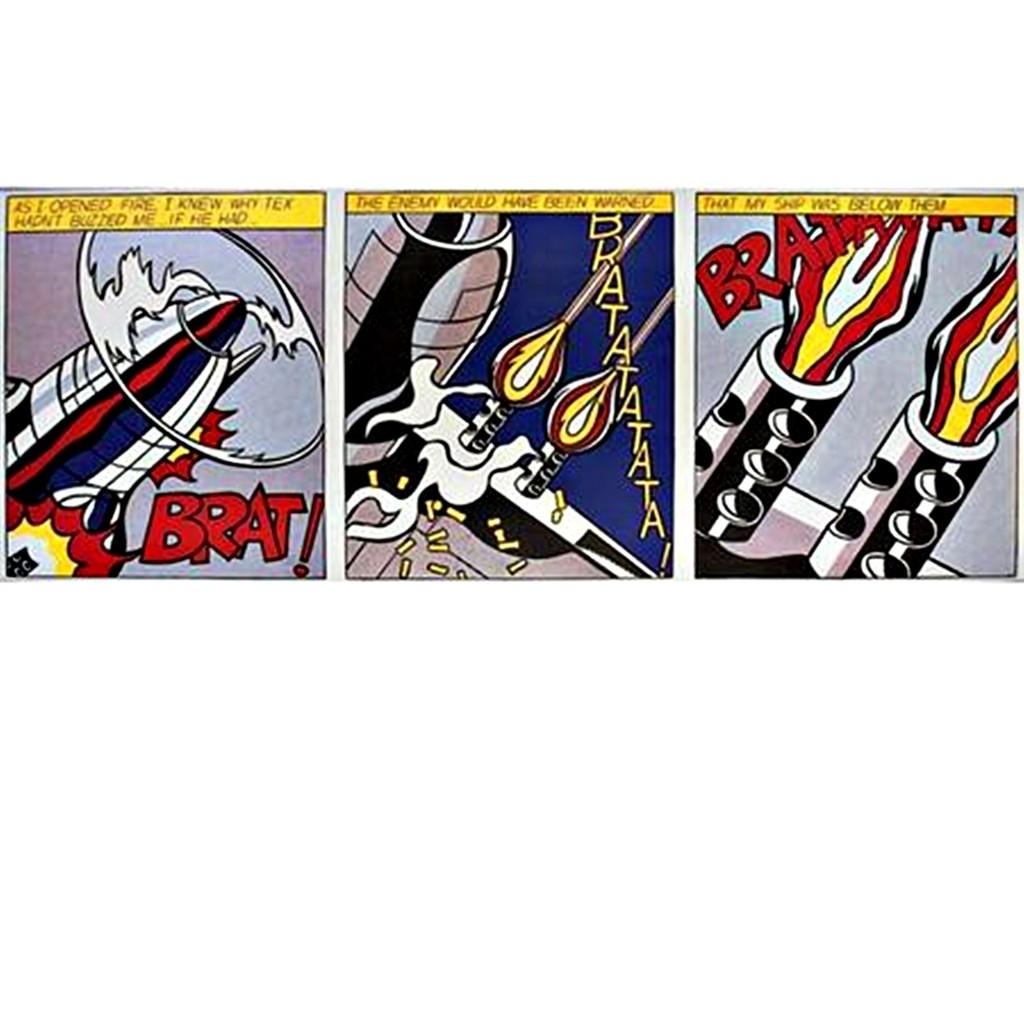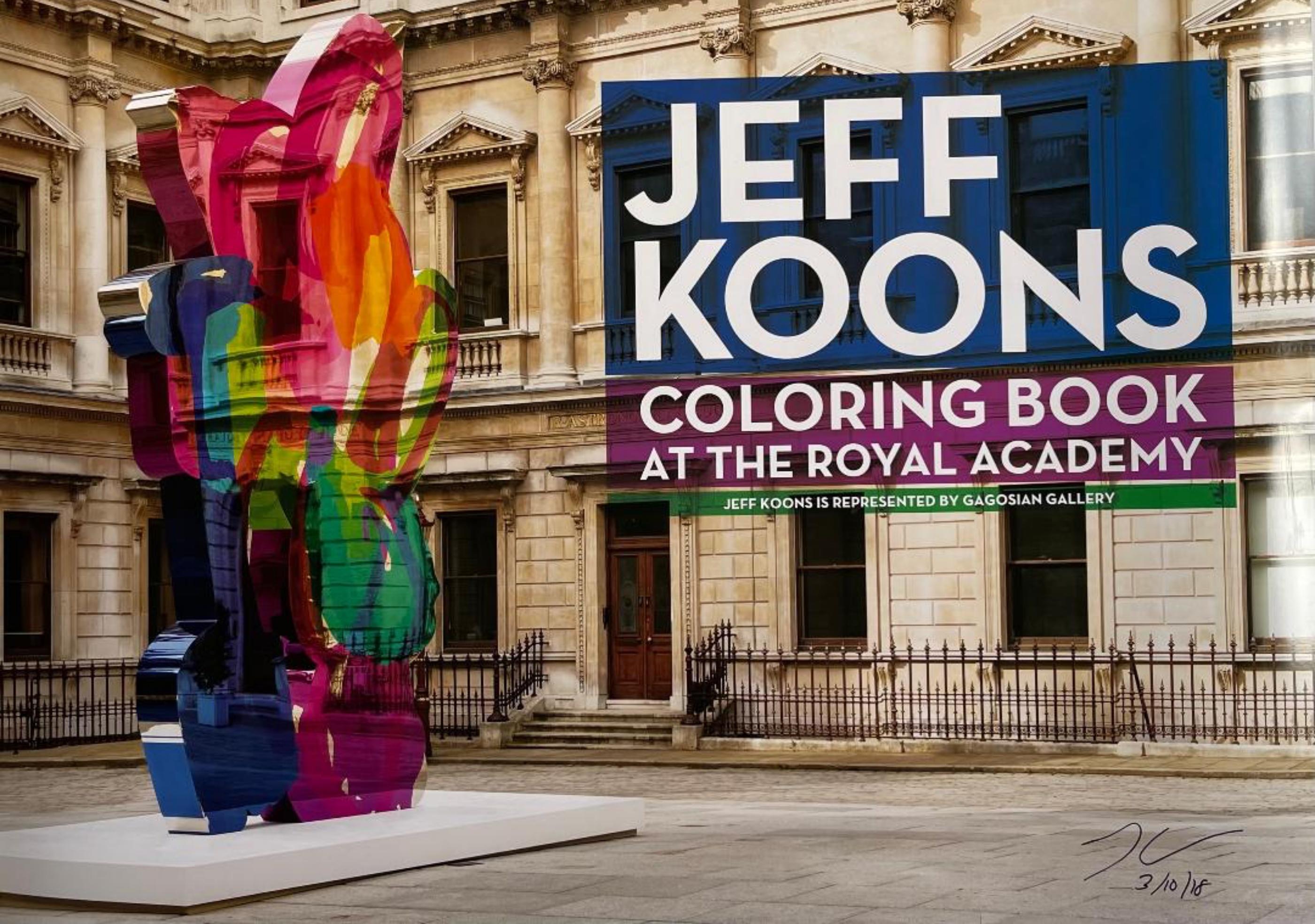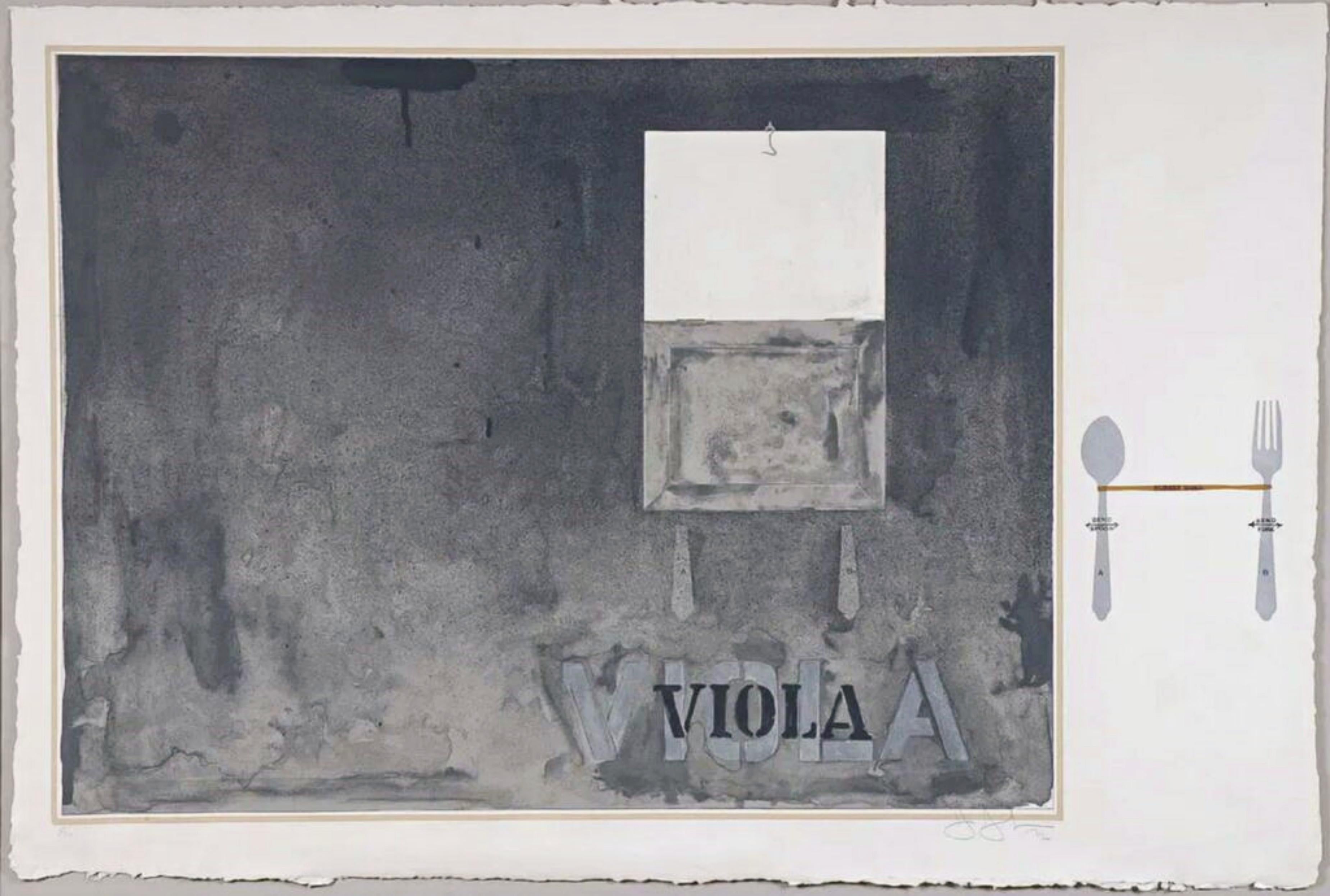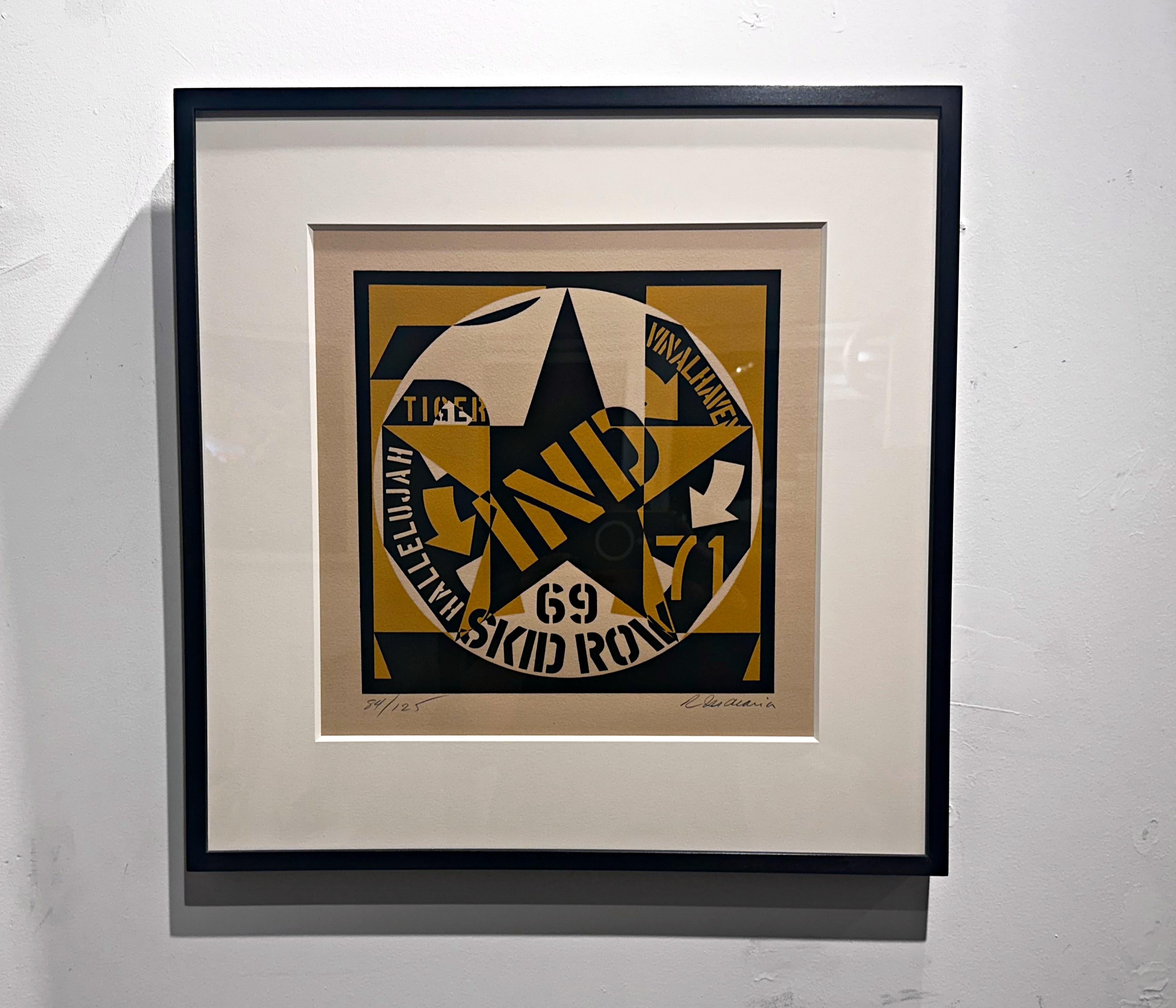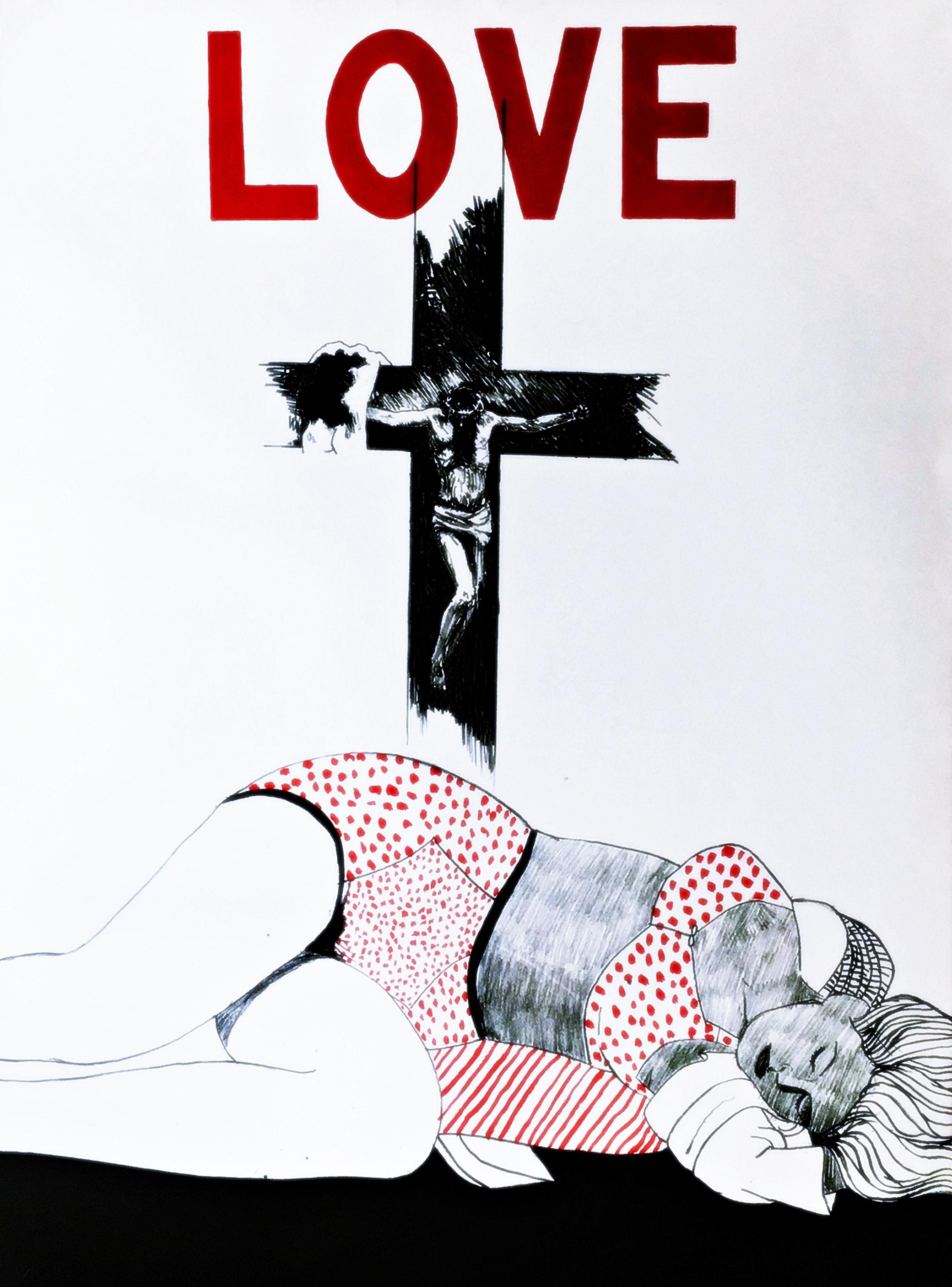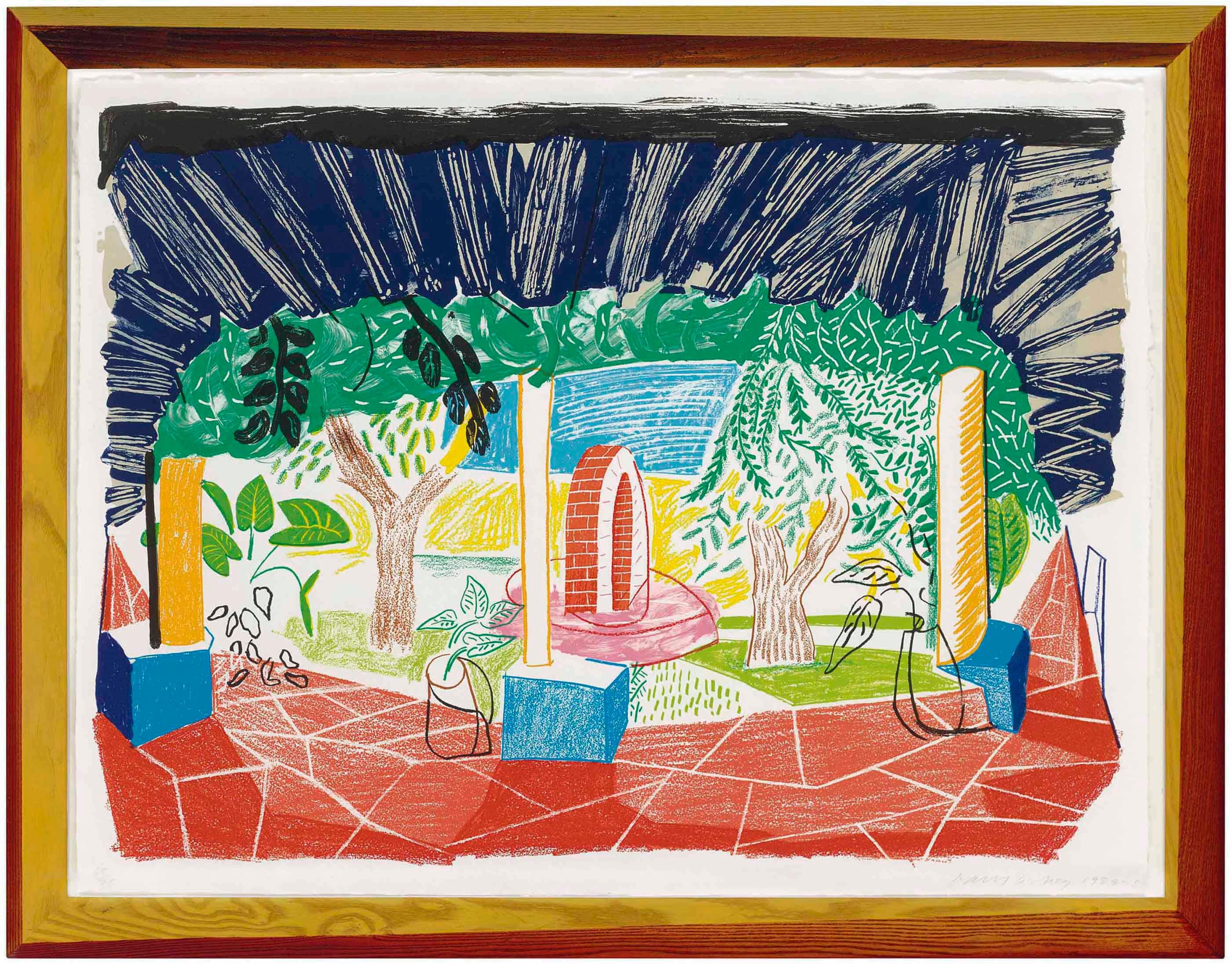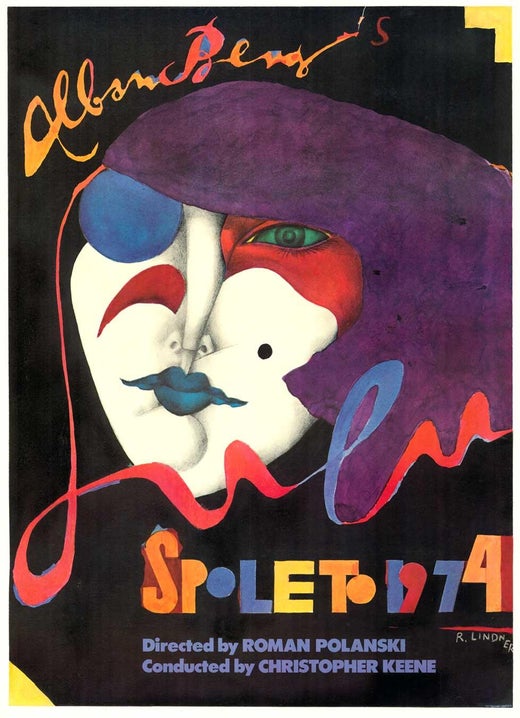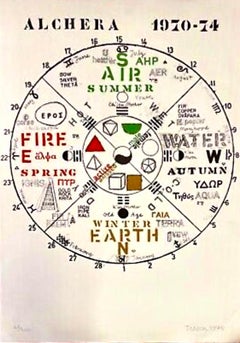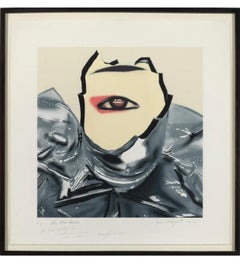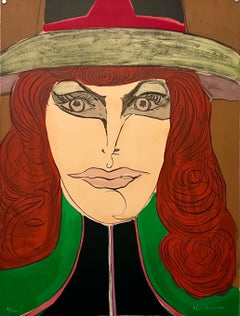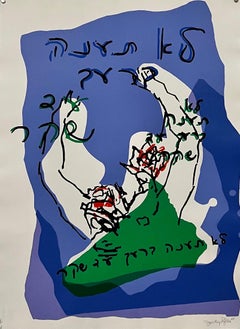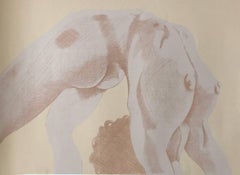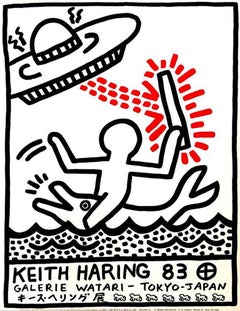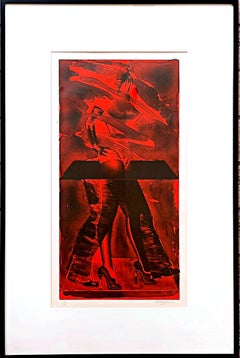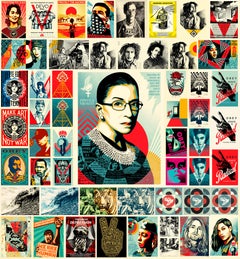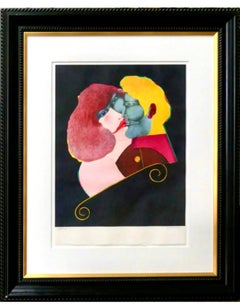
Modernist Lithograph Lovers Kiss Pop Art Mod Figure Richard Lindner Graphic Art
View Similar Items
Want more images or videos?
Request additional images or videos from the seller
1 of 9
Richard LindnerModernist Lithograph Lovers Kiss Pop Art Mod Figure Richard Lindner Graphic Art1971
1971
About the Item
- Creator:Richard Lindner (1901-1978, American)
- Creation Year:1971
- Dimensions:Height: 43 in (109.22 cm)Width: 37 in (93.98 cm)
- Medium:
- Movement & Style:
- Period:
- Condition:can be shipped without frame for 50$ frame has minor wear.
- Gallery Location:Surfside, FL
- Reference Number:1stDibs: LU3829818872
Richard Lindner
Richard Lindner (1901 – 1978) was a German-American painter. Lindner's mother was owner of a custom-fitting corset business and Richard Lindner grew up and studied at the Kunstgewerbeschule (Arts and Crafts School since 1940 Academy of Fine Arts). From 1924 to 1927 he lived in Munich and studied there from 1925 at the Kunstakademie. In 1927 Lindner moved to Berlin and stayed there until 1928, when he returned to Munich to become art director of a publishing firm. He remained in Munich until 1933, when he was forced to flee to Paris. Once in Paris, Lindner became politically engaged, sought contact with French artists and earned his living as a commercial artist. He was interned when World War II broke out in 1939 and later served in the French Army. In 1941, Lindner moved to the United States and worked in New York City as an illustrator of books and magazines. There he made contact with New York artists and German emigrants such as Albert Einstein, Marlene Dietrich, and Saul Steinberg. In 1948, Lindner became an American citizen. Lindner taught at a number of institutions including the Pratt Institute, Brooklyn, Hochschule fur bildende Kunste in Hamburg and Yale University School of Art and Architecture. His paintings often used the sexual symbolism of advertising and investigated definitions of gender roles in the media.
About the Seller
4.9
Platinum Seller
Premium sellers with a 4.7+ rating and 24-hour response times
Established in 1995
1stDibs seller since 2014
1,747 sales on 1stDibs
Typical response time: 2 hours
Authenticity Guarantee
In the unlikely event there’s an issue with an item’s authenticity, contact us within 1 year for a full refund. DetailsMoney-Back Guarantee
If your item is not as described, is damaged in transit, or does not arrive, contact us within 7 days for a full refund. Details24-Hour Cancellation
You have a 24-hour grace period in which to reconsider your purchase, with no questions asked.Vetted Professional Sellers
Our world-class sellers must adhere to strict standards for service and quality, maintaining the integrity of our listings.Price-Match Guarantee
If you find that a seller listed the same item for a lower price elsewhere, we’ll match it.Trusted Global Delivery
Our best-in-class carrier network provides specialized shipping options worldwide, including custom delivery.More From This Seller
View AllJoe Tilson British Pop Art Screenprint, Color Lithograph 4 Seasons 4 Elements
By Joe Tilson
Located in Surfside, FL
Silkscreen screenprint or Lithograph
Hand signed and numbered. An esoteric, mystical, Kabbala inspired print with Hebrew as well as other languages.
Joseph Charles Tilson RA (born 2...
Category
1970s Pop Art Abstract Prints
Materials
Screen, Lithograph
Large American Pop Art Color Abstract Lithograph James Rosenquist Glass Wishes
By James Rosenquist
Located in Surfside, FL
James Rosenquist (1933-2017)
THE GLASS WISHES (Glenn 161)
Color lithograph, 1978-1986, on wove paper, hand signed, dated, titled, dedicated for Jack Martin...
Category
1980s Pop Art Abstract Prints
Materials
Color, Lithograph
1971 Modernist Lithograph Redhead Pop Art Mod Fashionable Woman Richard Lindner
By Richard Lindner
Located in Surfside, FL
RICHARD LINDNER (American. 1901-1978)
Hand Signed limited edition lithograph with blindstamp
Publisher: Shorewood-Bank Street Atelier for the Skowhegan School of Painting and Sculpture
29.25 X 22 inches
Richard Lindner was born in Hamburg, Germany. In 1905 the family moved to Nuremberg, where Lindner's mother was owner of a custom-fitting corset business and Richard Lindner grew up and studied at the Kunstgewerbeschule (Arts and Crafts School since 1940 Academy of Fine Arts). From 1924 to 1927 he lived in Munich and studied there from 1925 at the Kunstakademie. In 1927 he moved to Berlin and stayed there until 1928, when he returned to Munich to become art director of a publishing firm. He remained there until 1933, when he was forced to flee to Paris, where he became politically engaged, sought contact with French artists and earned his living as a commercial artist. He was interned when the war broke out in 1939 and later served in the French Army. In 1941 he went to the United States and worked in New York City as an illustrator of books and magazines (Vogue, Fortune and Harper's Bazaar). He began painting seriously in 1952, holding his first one-man exhibit in 1954. His style blends a mechanistic cubism with personal images and haunting symbolism. LIndner maintained contact with the emigre community including New York artists and German emigrants (Albert Einstein, Marlene Dietrich, Saul Steinberg). Though he became a United States citizen in 1948, Lindner considered himself a New Yorker, but not a true American. However, over the course of time, his continental circus women became New York City streetwalkers. New York police uniforms replaced European military uniforms as symbols of authority.At a time when Abstract Expressionism was all the rage, Lindner’s painting went against the current and always kept its distance. His pictorial language of vibrant colours and broad planes of colour and his urban themes make him a forerunner of American Pop Art. At the same time, he owes the critical tone of his paintings to the influence of European art movements such as Neue Sachlichkeit and Dada. His first exhibition did not take place until 1954, by which time he was over fifty, and, interestingly, it was held at the Betty Parsons Gallery in New York, a venue associated with the American Expressionists. From 1952 he taught at the Pratt Institute, Brooklyn, from 1967 at Yale University School of Art and Architecture, New Haven. In 1957 Lindner got the William and Norma Copley Foundation-Award. In 1965 he became Guest Professor at the Akademie für Bildende Künste, Hamburg. His Ice (1966, Whitney Museum of American Art) established a connection between the metaphysical tradition and pop art. He did work on Rowlux which was used by a number of pop artists (most notably Roy Lichtenstein)The painting shows harsh, flat geometric shapes framing an erotic but mechanical robot-woman. His paintings used the sexual symbolism of advertising and investigated definitions of gender roles in the media. While influencing Pop Art (Andy Warhol, Tom Wesselmann and Claes Oldenburg amongst others) his highly colourful, hard-edge style seems to have brought him close to Pop Art, which he rejected. Nevertheless, he is immortalised on the cover of the Beatles record "Sgt. Pepper’s Lonely Hearts Club Band" (1967) as a patron of the pop culture. He also did a tapestry banner with the Betsy Ross Flag...
Category
1970s Pop Art Abstract Prints
Materials
Lithograph
Judy Rifka Abstract Expressionist Contemporary Lithograph Hebrew 10 Commandment
By Judy Rifka
Located in Surfside, FL
Judy Rifka (American, b. 1945)
44/84 Lithograph on paper titled "Thou Shalt Not Bear False Witness against Thy Neighbor"; Depicting an abstract composition in blue, green, red and black tones with Hebrew script. Judaica interest. (I have seen this print described as a screenprint and as a lithograph)
Hand signed in pencil and dated alongside an embossed pictorial blindstamp of a closed hand with one raised index finger. Solo Press.
From The Ten Commandments Kenny Scharf; Joseph Nechvatal; Gretchen Bender; April Gornik; Robert Kushner; Nancy Spero; Vito Acconci; Jane Dickson; Judy Rifka; Richard Bosman and Lisa Liebmann.
Judy Rifka (born 1945) is an American woman artist active since the 1970s as a painter and video artist. She works heavily in New York City's Tribeca and Lower East Side and has associated with movements coming out of the area in the 1970s and 1980s such as Colab and the East Village, Manhattan art scene. A video artist, book artist and abstract painter, Rifka is a multi-faceted artist who has worked in a variety of media in addition to her painting and printmaking. She was born in 1945 in New York City and studied art at Hunter College, the New York Studio School and the Skowhegan School of Painting and Sculpture in Maine.
Rifka took part in the 1980 Times Square Show, (Organized by Collaborative Projects, Inc. in 1980 at what was once a massage parlor, with now-famous participants such as Jenny Holzer, Nan Goldin, Keith Haring, Kenny Scharf, Jean-Michel Basquiat, and Kiki Smith, the roster of the exhibition reads like a who’s who of the art world), two Whitney Museum Biennials (1975, 1983), Documenta 7, Just Another Asshole (1981), curated by Carlo McCormick and received the cover of Art in America in 1984 for her series, "Architecture," which employed the three-dimensional stretchers that she adopted in exhibitions dating to 1982; in a 1985 review in the New York Times, Vivien Raynor noted Rifka's shift to large paintings of the female nude, which also employed the three-dimensional stretchers. In a 1985 episode of Miami Vice, Bianca Jagger played a character attacked in front of Rifka's three-dimensional nude still-life, "Bacchanaal", which was on display at the Museum of Art Fort Lauderdale. Rene Ricard wrote about Rifka in his influential December 1987 Art Forum article about the iconic identity of artists from Van Gogh to Jean-Michel Basquiat and Keith Haring, The Radiant Child.The untitled acrylic painting on plywood, in the collection of the Honolulu Museum of Art, demonstrates the artist's use of plywood as a substrate for painting. Artist and writer Mark Bloch called her work "imaginative surfaces that support experimental laboratories for interferences in sensuous pigment." According to artist and curator Greg de la Haba, Judy Rifka's irregular polygons on plywood "are among the most important paintings of the decade".
In 2013, Rifka's daily posts on Facebook garnered a large social media audience for her imaginative "selfies," erudite friendly comments, and widely attended solo and group exhibitions, Judy Rifka's pop art figuration is noted for its nervous line and frenetic pace. In the January 1998 issue of Art in America, Vincent Carducci echoed Masheck, “Rifka reworks the neo-classical and the pop, setting all sources in quotation for today’s art-world cognoscenti.” Rifka, along with artists like David Wojnarowicz, helped to take Pop sensibility into a milieu that incorporated politics and high art into Postmodernism; Robert Pincus-Witten stated in his 1988 essay, Corinthian Crackerjacks & Passing Go that "Rifka’s commitment to process and discovery, doctrine with Abstract Expressionist practice, is of paramount concern though there is nothing dogmatic or pious about Rifka’s use of method. Playful rapidity and delight in discovery is everywhere evident in her painting." In 2016, a large retrospective of Rifka's art was shown at the Jean-Paul Najar Foundation in Dubai. In 2017, Gregory de la Haba presented a Rifka retrospective at the Amstel Gallery in The Yard, a section of Manhattan described as "a labyrinth of small cubicles, conference rooms and small office spaces that are rented out to young entrepreneurs, professionals and hipsters". In 2019 her video Bubble Dancers New Space Ritual was selected for the International Istanbul Bienali.
Alexandra Goldman Talks To Judy Rifka About Ionic Ironic: Mythos from the '80s at CORE:Club and the Inexistence of "Feminist Art" Whitehot Magazine of Contemporary Art. She was included in "50 Contemporary Women Artists", a book comprising a refined selection of current and impactful artists. The foreword is by Elizabeth Sackler of the Brooklyn Museum’s Sackler Center for Feminist Art. Additional names in the book include sculptor and carver Barbara Segal...
Category
1980s Pop Art Abstract Prints
Materials
Lithograph, Screen
Large American Pop Art Color Abstract Lithograph "Black Tie" James Rosenquist
By James Rosenquist
Located in Surfside, FL
Black Tie, 1977
James Rosenquist, American, 1933–2017.
Printed by Maurice Sanchez at Derrière L'Étoile Studios, Inc.
Published by Sidney Singer
Color lithograph on rolled white Arches Cover paper
Blindstamp of a man in a hat, bottom right
Hand signed in pencil. Dated 1977 lower right. Titled and numbered 76/100 lower left.
Measures 73 1/2" x 37
James Rosenquist (November 29, 1933 – March 31, 2017) was an American artist and one of the proponents of the pop art movement. Drawing from his background working in sign painting, Rosenquist's pieces often explored the role of advertising and consumer culture in art and society, utilizing techniques he learned making commercial art to depict popular cultural icons and mundane everyday objects. While his works have often been compared to those from other key figures of the pop art movement, such as Andy Warhol, JIm Dine and Roy Lichtenstein, Rosenquist's pieces were unique in the way that they often employed elements of surrealism using fragments of advertisements and cultural imagery to emphasize the overwhelming nature of ads. He was a 2001 inductee into the Florida Artists Hall of Fame.
Rosenquist was born on November 29, 1933, in Grand Forks, North Dakota, the only child of Louis and Ruth Rosenquist. His parents were amateur pilots of Swedish descent who moved from town to town to look for work, finally settling in Minneapolis, Minnesota. His mother, who was also a painter, encouraged her son to have an artistic interest. In junior high school, Rosenquist won a short-term scholarship to study at the Minneapolis School of Art and subsequently studied painting at the University of Minnesota from 1952 to 1954. In 1955, at the age of 21, he moved to New York City on scholarship to study at the Art Students League, studying under painters such as Edwin Dickinson and George Grosz. Talking about his experience at the Art Students League, Rosenquist said "I studied only with the abstract artists. They had commercial artists there teaching commercial work, I didn't bother with that. I was only interested in -- see, here's how it started. I was interested in learning how to paint the Sistine Chapel. It sounds ambitious, but I wanted to go to mural school". While studying in New York, Rosenquist took up a job as a chauffeur, before deciding to join the International...
Category
1970s Pop Art Abstract Prints
Materials
Lithograph, Color
Vintage Pop Art 1997 Offset Lithograph Larry Rivers Music Poster Hamptons NY
By Larry Rivers
Located in Surfside, FL
Larry Rivers
"The Music Festival of the Hamptons / July 18-27 1997" poster,
Not hand signed. [Dimensions: 24" H x 18" W]
Larry Rivers (born Yitzroch Loiza Grossberg) (1923 – 2002) was an American artist, musician, filmmaker, and occasional actor. Considered by many scholars to be the "Godfather" and "Grandfather" of Pop art, he was one of the first artists to merge non-objective, non-narrative art with narrative and objective abstraction.
Rivers took up painting in 1945 and studied at the Hans Hofmann School from 1947–48. He earned a BA in art education from New York University in 1951.
His work was quickly acquired by the Museum of Modern Art. A 1953 painting Washington Crossing the Delaware was damaged in fire at the museum five years later.
He was a pop artist of the New York School, reproducing everyday objects of American popular culture as art. He was one of eleven New York artists featured in the opening exhibition at the Terrain Gallery in 1955 along with Paul Mommer, Leonard Baskin, Peter Grippe
During the early 1960s Rivers lived in the Hotel Chelsea, notable for its artistic residents such as Bob Dylan, Janis Joplin, Leonard Cohen, Arthur C. Clarke, Dylan Thomas, Sid Vicious and multiple people associated with Andy Warhol Factory and where he brought several of his French nouveau réalistes friends like Yves Klein who wrote there in April 1961 his Manifeste de l'hôtel Chelsea, Arman, Martial Raysse, Jean Tinguely, Niki de Saint-Phalle, Christo & Jean Claude, Daniel Spoerri or Alain Jacquet, several of whom, like Rivers, left some pieces of art in the lobby of the hotel for payment of their rooms. In 1965, Rivers had his first comprehensive retrospective in five important American museums.
His final work for the exhibition was The History of the Russian Revolution, which was later on extended permanent display at the Hirshhorn Museum and Sculpture Garden in Washington, DC. He spent 1967 in London collaborating with the American painter Howard Kanovitz.
In 1968, Rivers traveled to Africa for a second time with Pierre Dominique Gaisseau to finish their documentary Africa and I, which was a part of the groundbreaking NBC series Experiments in Television. During this trip they narrowly escaped execution as suspected mercenaries.
During the 1970s, Rivers worked closely with Diana Molinari and Michel Auder on many video tape projects, including the infamous Tits, and also worked in neon.
Rivers's legs appeared in John Lennon and Yoko Ono's 1971 film Up Your Legs Forever.
From 1940–1945 he worked as a jazz saxophonist in New York City, changing his name to Larry Rivers in 1940 after being introduced as "Larry Rivers and the Mudcats" at a local pub. He studied at the Juilliard School of Music in 1945–46, along with Miles Davis, with whom he remained friends until Davis's death in 1991.
Larry Rivers was born in the Bronx to Samuel and Sonya Grossberg, Jewish immigrants from Ukraine. In 1945, he married Augusta Berger, and they had one son, Steven. Rivers also adopted Berger's son from a previous relationship, Joseph, and reared both children after the couple divorced. In 1949 he had his first one-man exhibition at the Jane Street Gallery in New York. This same year, he met and became friends with John Ashbery, and Kenneth Koch. In 1950 he met Frank O’Hara. This same year he took his first trip to Europe spending eight months in Paris, France, reading and writing poetry. Beginning in 1950 and continuing until Frank’s death in July of 1966, Larry Rivers and Frank O’Hara cultivated a uniquely creative friendship that produced numerous collaborations, as well as inspired paintings and poems. In 1951 Rivers’ works were shown at the Tibor de Nagy Gallery where he continued to show annually (except 1955) for about 10 years. In 1954 he had his first exhibition of sculptures at the Stable Gallery, New York. In 1955 The Museum of Modern Art acquired Washington Crossing the Delaware. This same year he won 3rd prize in the Corcoran Gallery national painting competition for “Self-Figure.” Rivers’ also painted “Double Portrait of Berdie” in 1955, which was soon purchased by the Whitney Museum.
In 1957 he and Frank O’Hara began work on “Stones,” a collaborative mix of images and poetry in a series of lithograph for Tatyana Grosman company ULAE. During this time he also appeared on the television game show “The $64,000.00 Question” where along with another contestant, they both won, each receiving $32,000.00. In 1958 he again spent time in Paris and played in various jazz bands. In 1959 he painted Cedar Bar Menu...
Category
1990s Pop Art Abstract Prints
Materials
Lithograph, Offset
You May Also Like
Bent over Backwards ( Artist Proof )
By Bob Pardo
Located in New York, NY
Bob Pardo (American) "Bent Over Backwards" Artist Proof, Abstract/ Pop Lithograph signed and numbered in Pencil, 27 x 35.50, Late 20 th Century
Colors: Beig...
Category
Late 20th Century Pop Art Abstract Prints
Materials
Lithograph
Keith Haring Galerie Watari poster 1983 (vintage Keith Haring)
By Keith Haring
Located in NEW YORK, NY
Keith Haring Galerie Watari Exhibition Poster, 1983:
Medium: Offset-lithograph on smooth wove paper.
Dimensions: 20 x 27 inches.
Condition...
Category
1980s Pop Art Figurative Prints
Materials
Lithograph
Red Feat (Lloyd, 73) Signed/N silkscreen by pioneering British Pop Artist Framed
By Allen Jones
Located in New York, NY
Rare coveted silkscreen in museum quality frame:
Allen Jones
Red Feat (Lloyd, 73), 1976
Lithograph on Arches paper
Hand signed, dated and numbered 49/60 in pencil recto, with Landfal...
Category
1970s Pop Art Abstract Prints
Materials
Lithograph
Shepard Fairey Screen-prints: collection of 60 works (2009-2022)
By Shepard Fairey
Located in NEW YORK, NY
Shepard Fairey Screen-prints: collection of 60 works: 2009-2022:
A rare assemblage of 60 hand-signed Shepard Fairey screen-prints; collected over a near 15 year period (2009-2022). Notable imagery includes: Bob Marley, Keith Haring, Ruth Bader Ginsburg, Kurt Cobain, as well as a series of vivid anti-war pieces defining the artist's practice (title list found further below). Each very well-preserved.
Medium: Screen-prints on heavy paper. 2009-2022 (see below for a list of titles & years).
Dimensions ranging from: 19.5 x 16 inches to 24x36 inches.
Each work is hand-signed; works are either numbered from their respective main editions or notated 'AP' (see last listing image); a few or several works are signed, but not numbered.
Excellent overall condition with the exception of perhaps some minor signs of handling on a few examples.
Provenance: Private collection New York via Shepard Fairey.
Listing images beginning with image 2 represent the actual works.
These works will be shipped flat using protective materials. Please feel free to contact us with any additional questions.
Titles & Years:
OCEAN TODAY...
Category
2010s Pop Art Abstract Prints
Materials
Lithograph, Screen
Four Winds Deluxe Edition of 100 Pop Art Stamped Estate of Robert Indiana Framed
By Robert Indiana
Located in New York, NY
Robert Indiana
Four Winds, from the Deluxe edition of the 1 Cent Life Portfolio (with Robert Indiana's blind stamp, #85/100, acquired from the Estate of Robert Indiana), 1964
Lithograph on wove paper (bears Robert Indiana's embossed stamp)
Artist's distinctive embossed blind stamp for 1964 on the lower left front which Robert Indiana used as his signature for this portfolio
Frame Included: Elegantly floated and framed in a museum quality wood frame with UV plexiglass
Bears Robert the artist's distinctive blind stamp on the lower left front which Robert Indiana used as his signature for this portfolio
This Robert Indiana is a rare stamped...
Category
1960s Pop Art Figurative Prints
Materials
Lithograph
As I Opened Fire Triptych (Corlett App.5) suite of three individual prints, 1966
By Roy Lichtenstein
Located in New York, NY
Roy Lichtenstein
As I Opened Fire Triptych (Corlett App.5), 1966, ca. 2001
Set of three (3) Color Offset Lithographs on wove paper. Museum stamped verso. Unframed
Museum stamped vers...
Category
1960s Pop Art Figurative Prints
Materials
Lithograph, Offset
